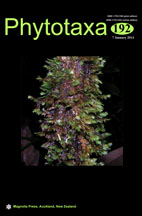Abstract
The main purpose of this study was to test the hypothesis that Stachys persepolitana is extraneous in Stachys (tribe Stachydeae, subfam. Lamioideae, Lamiaceae) and instead belongs to the genus Lamium (Lamieae, Lamioideae). We investigated the phylogenetic position of S. persepolitana using plastid (rps16 intron, trnL-F and matK regions) and nuclear (nrITS) DNA sequence data with both parsimony and Bayesian phylogenetic approaches. Plastid and nuclear data strongly support that S. persepolitana is extraneous in Stachys and belongs in fact to the genus Lamium. Morphological characters also corroborate its placement in Lamium. Most of the morphological features used to distinguish S. persepolitana from the rest of Stachys fit with Lamium. Anterior pair of stamens bending outward after pollination, anthers hairy and mericarps triquetrous are the most important characters correlating S. persepolitana to Lamium.

